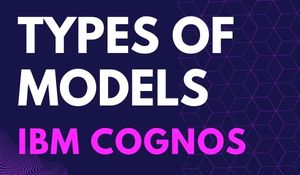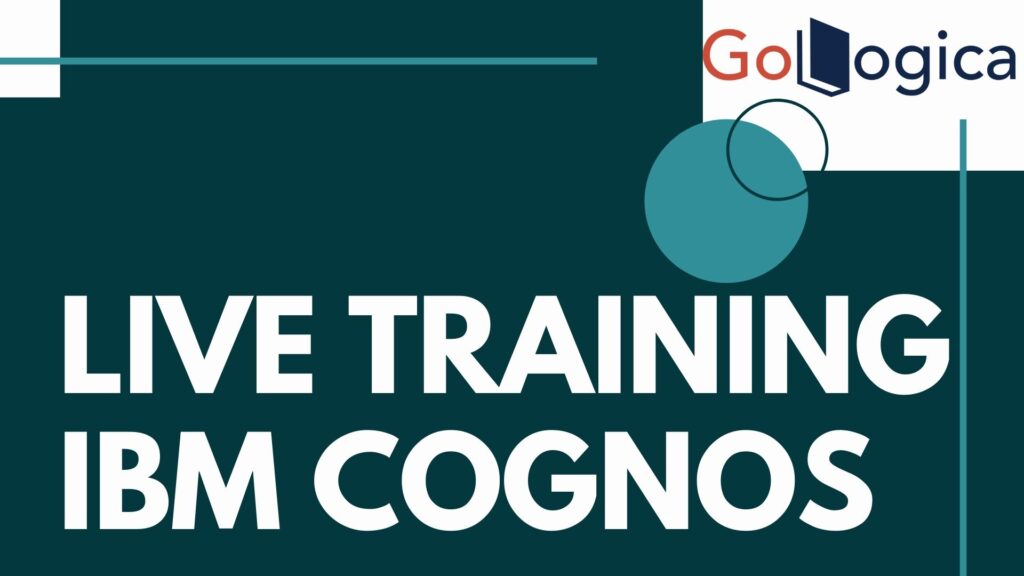
A model is a collection of metadata for one or more data sources which include physical information and business information. It entitles a variety of OLAP data sources. IBM Cognos software enables performance management on normalized and de-normalized relational data sources.

Types of Cognos
Important types of Cognos reporting tools:
Content Store:
It is a set of database tables to store application data of the Cognos which are used by the Content Manager.
Content Manager:
The Cognos manager assists you to manage storage from the content store database and retrieval of report specifications, configuration data, and published packages.
Cognos Content Database:
Cognos content database is a self-contained database server that is used to host the content store database in demo environments when enterprise DMBS is unavailable.
How to customize the Cognos Model
When customizing a certain schema that includes additional metrics, attributes, or audience levels, a Unica reporting schema can edit the IBM Cognos model also it modifies the reporting view or tables that are based on that schema. Importing the additional items into the data model and using the Cognos Framework Manager features to query the views or tables. Updating the Cognos model which totally depends on the changes that have been made in the Unica reporting views or tables. To represent the associated views by updating the query object to import the new columns as well as by adding columns for attributes, metrics, or response types by modifying the existing views. In the case of modifying the overtime variations for performance or runtime reports or if you created new reporting schemas for all additional audience levels, you have added new views, there is a possibility of usage of the Framework Manager MetaData Wizard to import the views into the data model.
There are 2 types of models in Cognos:
1. Relational model
2. Dimensionally modeled relational source model
1. Relational model:
A relational model as a source is created from the relational database. This relational model supports ROLAP. The users cannot perform multi-dimensional analyses such as drill up and drill down analyses. To modify the data adapt a multi-dimensional analysis so that users can view the data at various levels of detail.
The following are the multidimensional techniques:
Drill down:
Users can view the detailed information, As it is a process of navigating the data from the highest level to the lowest level details
Drill up:
Users can view the summary data, and it is a process of browsing the data from the lowest level to the highest level.
2. DMR Model:
This model as a source is created from a relational model. The DMR model is created with hierarchies. A hierarchy is an ordered series of related dimensions grouped together to perform multidimensional analysis. Between the levels, there is a multiple and too many relationships. DMR model is created with 2 types of dimensions.
Regular Dimension
Measure Dimension
1. Regular Dimension:
A regular dimension is created with hierarchies. The regular dimension organizes the information in a hierarchy from the highest level of granularity to the lowest level. A hierarchy is an ordered list of levels. It usually contains multiple levels. It contains descriptive and business key information. Each level requires KEY and CAPTION Hierarchies for regular dimensions.
2. Measure Dimension:
It is defined as a collection of facts. Can create a measure dimension for one or more query subjects that have a valid relationship between them. Model measure dimensions should be composed of only quantitative items. For example, Key performance indicators like Sales, Net profit.
COGNOS Roles
Cognos Architect:
Architects are responsible to understand the metadata and security. Should report the requirement Templates. The pace at designing the interfaces of a project. In most cases, the tables which are in DWH are not directly used to generate the reports.
Cognos Developer:
They create reports from the Model. Cognos is based on modern reporting technology
In the concept of MRT, technical issues of database and organization structure are hidden from the end-user point of view.
Features of IBM Cognos
Important features of Cognos are as given below:
- It Offers In-memory streaming analytics.
- Real-time events, alerts, and notifications are provided.
- It is Intuitive and it will appeal Web 2.0 interface.
- Authorizes search assistance, Drag-and-drop, and free-form assembly.
- As it is guarded by a firewall it offers secure data as it is guarded by a firewall
- Personalized and progressive interaction
- Wizard-driven external data
- Automatic access to SAP BW queries
- It Allows features like scenario modeling, real-time monitoring, and predictive analytics
- Users can edit existing data.
- Drill-Through Capability.
- Potential Image Documentation Integration.
- It is platform-independent, scalable, and reliable.

Conclusion
Cognos is a standout amongst the most sought-after BI Software that engages organizations with better basic leadership through broad Data Analytics reports and estimates. It is especially prevalent for its intelligent dashboards and imaginative reports GoLogica’s preparation educational programs are extensively intended to make competitors agreeable to utilizing every one of its components in a live domain. Gologica helps you to achieve it and lends your hand to the organization and individual’s career to ace in the industry. Enroll Now Happy Learning!!
Author Bio

Kavya Sathvik, A content strategist at Gologica. She has 2 years of experience in content writing. Passionate about writing technical content and also creating effective content strategy for a brand or blogs. Contact her: Linkedin
